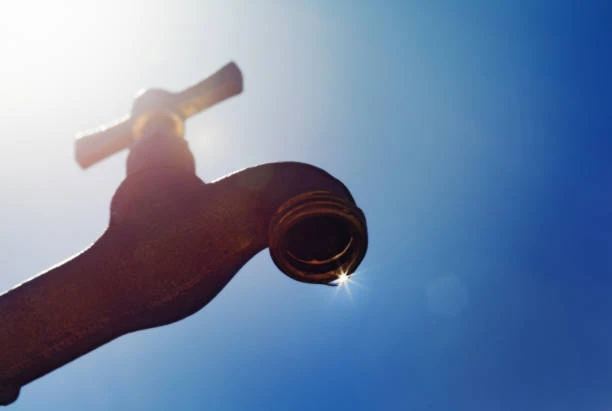As winter approaches, it’s important to prepare for the possibility of hard freezes, particularly if you live in Houston or the surrounding areas, A hard freeze can cause significant damage to your outdoor Faucets , leading to expensive repairs. One area of your home that needs special attention is your outdoor faucets. When temperatures dip below freezing, water in unprotected pipes and faucets can expand and crack, leading to leaks and bursts when the temperature rises again. One simple, cost-effective way to protect your outdoor faucets is by insulating them with everyday items like Whataburger cups.
In this article, we’ll walk you through five easy steps to insulate your outdoor faucets using Whataburger cups or similar foam cups. Not only will this help prevent damage from freezing temperatures, but it’s also an environmentally friendly and budget-friendly solution.
Why You Need to Insulate Your Outdoor Faucets
Houston residents might not see snow often, but hard freezes are common during winter. Even brief exposure to below-freezing temperatures can cause pipes to freeze, crack, and burst, leading to potential water damage. Since outdoor faucets are typically exposed to the elements, they’re especially vulnerable to freezing.
Here’s why insulation is so important:
- Prevents water freezing: Insulating outdoor faucets ensures the water inside doesn’t freeze, which can expand and burst pipes.
- Cost-effective: Using Whataburger cups, which are often thrown away, is an inexpensive solution to protect your faucets.
- Quick and easy: The process doesn’t require advanced tools or skills, making it a perfect DIY project for anyone.
Let’s dive into how to insulate your outdoor faucets with Whataburger cups.
Step 1: Gather Your Materials
Before you begin insulating your outdoor faucets, gather the necessary materials. You will need:
- Whataburger cups (or other large foam cups)
- Duct tape or zip ties
- A pair of scissors (optional, depending on your approach)
- Pipe insulation foam (optional for extra protection)
- Towel or rag (optional)
Pro Tip: If you don’t have Whataburger cups, any foam cups from fast food restaurants will do. Foam is an excellent insulator and is readily available.

Step 2: Turn Off the Water Supply to Your outdoor faucets
Before insulating your faucets, it’s crucial to turn off the water supply to any outdoor faucets. In Houston, many homes have a shut-off valve located inside the house, typically near the water meter or in the garage. To turn off the supply:
- Locate the shut-off valve for the outdoor faucet.
- Turn it clockwise to close it completely.
Once the water is turned off, relieve any pressure by opening the outdoor faucet to allow any remaining water to drain out. This reduces the chance of any trapped water freezing inside the faucet and causing damage.
Step 3: Clean the Faucet Area
Before you insulate, ensure the faucet is clean and dry. Wipe off any dirt, debris, or moisture from the faucet and surrounding pipes with a towel or rag. Any water left on the faucet can freeze and cause ice to form, which might compromise the insulation.
Step 4: Place the Whataburger Cup Over the Faucet
Now, take your Whataburger cup and place it over the outdoor faucet, ensuring it covers the entire faucet and valve. Foam cups, like those used by Whataburger, work well because they have great insulating properties that can help keep the faucet warm enough to avoid freezing.
If the cup is too large, you can trim it to fit more snugly around the faucet. Just use scissors to trim the sides or cut the cup down to a smaller size. The goal is to create a snug, protective layer around the faucet.
Step 5: Secure the Cup with Duct Tape or Zip Ties
To keep the Whataburger cup securely in place, use duct tape or zip ties to fasten it around the faucet. Start by wrapping the duct tape around the top of the cup and the faucet neck, ensuring that the cup stays attached to the faucet even in windy conditions. Alternatively, zip ties can also be used to fasten the cup tightly around the faucet.
If you have multiple outdoor faucets, repeat this process for each one. For extra protection, consider wrapping the pipes leading to the faucet with pipe insulation foam. This adds another layer of defense, especially if your faucet is exposed to wind.
Additional Tips for Outdoor Faucet Insulation
- Use multiple cups for extra insulation: If you live in an area where temperatures are expected to drop significantly, you can double up on the insulation by stacking two or more cups over the faucet. Just ensure the cups fit securely and are taped properly.
- Wrap exposed pipes: If the pipes that lead to the faucet are exposed, wrap them with foam pipe insulation before covering the faucet itself. This provides additional protection against freezing temperatures.
- Add a towel for extra warmth: In extreme cold conditions, you can add a towel or rag inside the foam cup for an extra layer of insulation. Just be sure to make sure everything is dry before applying the cup.
Why Whataburger Cups?
While it might seem unconventional, using Whataburger cups to insulate your outdoor faucets is both practical and effective. Here are some reasons why this approach works:
- Foam provides excellent insulation: Foam cups are made from polystyrene, a material known for its insulating properties. It helps retain heat and keep your faucet above freezing.
- Easy to find: Whataburger cups are common in many households, especially in Texas. They’re also free if you’ve enjoyed a meal at the restaurant!
- Eco-friendly: Reusing disposable cups instead of throwing them away helps reduce waste and gives these cups a second life.
Conclusion outdoor faucets
Houston’s hard freezes may not be frequent, but when they occur, it’s crucial to protect your outdoor faucets to prevent costly water damage. By following these five easy steps to insulate your faucets using Whataburger cups, you can keep your plumbing safe and avoid the headaches that come with frozen pipes. This simple DIY solution provides an effective way to ensure that your faucets remain functional and protected during the coldest months of the year.
Frequently Asked Questions (FAQs)
1. How long do I need to keep the insulation on the outdoor faucets?
It’s best to keep the insulation on until the temperatures warm up, typically after the freeze warning has passed. In Houston, this could range from a few days to a week, depending on the severity of the freeze.
2. Can I use other types of foam cups for insulation?
Yes, any foam cup can work as an insulator. The key is to ensure it covers the faucet completely and is secured with tape or zip ties.
3. Should I turn off the water supply to my outdoor faucets every winter?
Yes, it’s a good practice to turn off the water supply to your outdoor faucets before the cold weather sets in. This reduces the risk of freezing and bursting pipes.
4. Can I use towels to insulate my outdoor faucets instead of foam cups?
Towels can help, but foam cups provide more effective insulation. If you use towels, you’ll need to wrap them tightly and secure them with duct tape or plastic covers to ensure they stay in place.
5. How can I prevent outdoor faucet damage during the winter in the future?
In addition to insulating, consider installing frost-proof outdoor faucets. These faucets are designed to prevent freezing by keeping the water supply valve inside the home.


















